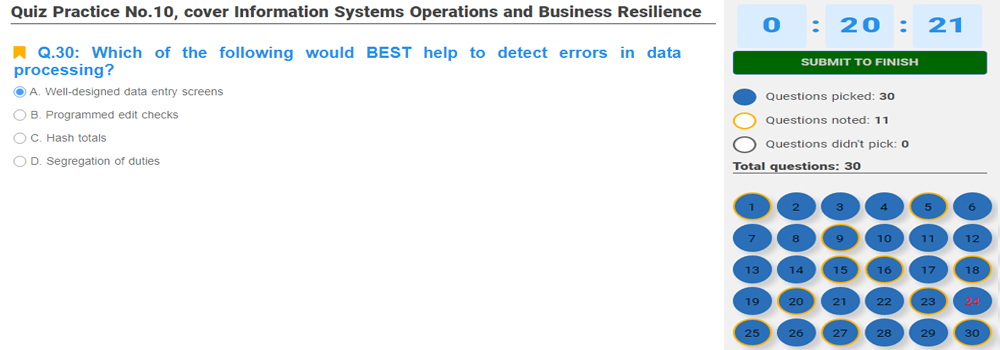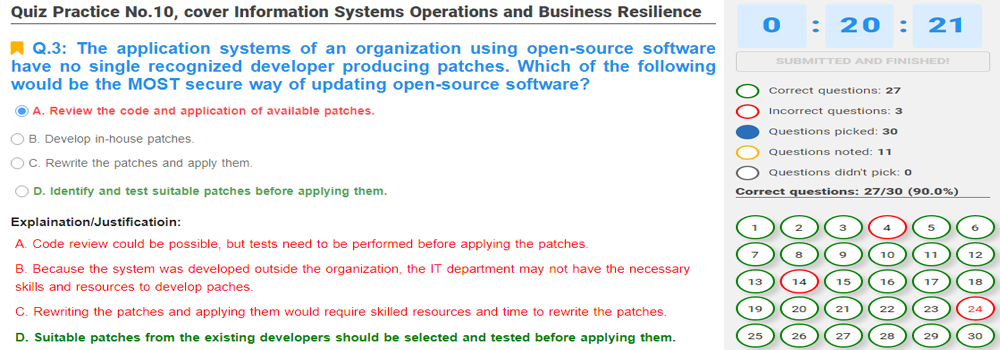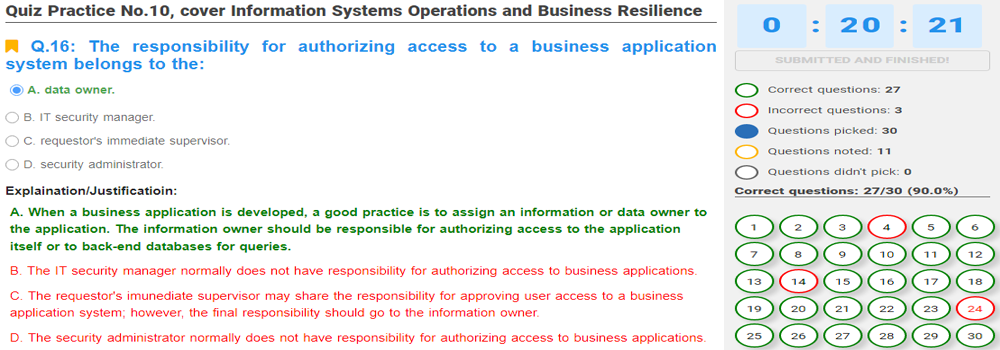[Study Guide Review, Updated JULY, 2024] Project Management Professional Cert code: PMP, Questions of the exam: 180, Minutes of the exam: 230, Correct to pass: 70%.
[Study Guide Review, Updated JUNE, 2024] Project Management Professional Cert code: PMP, Questions of the exam: 180, Minutes of the exam: 230, Correct to pass: 70%.
[Study Guide Review, Updated MAY, 2024] Project Management Professional Cert code: PMP, Questions of the exam: 180, Minutes of the exam: 230, Correct to pass: 70%.
[Study Guide Review, Updated APRIL, 2024] Project Management Professional Cert code: PMP, Questions of the exam: 180, Minutes of the exam: 230, Correct to pass: 70%.
[Study Guide Review, Updated FEBRUARY, 2024] Project Management Professional Cert code: PMP, Questions of the exam: 180, Minutes of the exam: 230, Correct to pass: 70%.
SOME NOTES ABOUT PROJECT MANAGEMENT PROFESSIONAL:
Project Management Professional [PMP] is an important and mandatory certification on your path to becoming an expert in your field.
To get this certificate, you need to firmly and confidently grasp the content listed below. Then, you need to pass the exam directly on PMI's system. This exam has a duration of 230 minutes, with 180 questions. You need to answer correctly at least 70% of the total questions on the exam.
Below are the contents that you need to grasp firmly and confidently before registering to take the exam on PMI's system:
1. What Is a Project?
1.1. Is It a Project?
1.2. What Is Project Management?
1.3. Skills Every Good Project Manager Needs.
1.4. Understanding Organizational Structures.
1.5. Understanding Project Life Cycles and Project Management Processes.
1.6. Agile Project Management.
2. Creating the Project Charter.
2.1. Exploring the Project Management Knowledge Areas.
2.2. Understanding How Projects Come About.
2.3. Kicking Off the Project Charter.
2.4. Identifying Stakeholders.
2.5. Introducing the Kitchen Heaven Project Case Study.
3. Developing the Project Scope Statement.
3.1. Developing the Project Management Plan.
3.2. Overview of the Project Scope Management Knowledge Area.
3.3. Plan Scope Management.
3.4. Collecting Requirements.
3.5. Defining Scope.
3.6. Writing the Project Scope Statement.
3.7. Creating the Work Breakdown Structure.
4. Creating the Project Schedule.
4.1. Overview of the Project Schedule Management Knowledge Area.
4.2. Creating the Schedule Management Plan.
4.3. Defining Activities.
4.4. Understanding the Sequence Activities Process.
4.5. Estimating Activity Resources.
4.6. Estimating Activity Durations.
4.7. Developing the Project Schedule.
5. Developing the Project Budget and Communicating the Plan.
5.1. Overview of the Project Cost Management Knowledge Area.
5.2. Creating the Cost Management Plan.
5.3. Estimating Costs.
5.4. Establishing the Cost Baseline.
5.5. Understanding Stakeholders.
5.6. Overview of the Project Communication Management Knowledge Area.
5.7. Communicating the Plan.
6. Risk Planning.
6.1. Planning for Risks.
6.2. Overview of the Project Risk Management Knowledge Area.
6.3. Planning Your Risk Management.
6.4. Identifying Potential Risk.
6.5. Analyzing Risks Using Qualitative Techniques.
6.6. Quantifying Risk.
6.7. Developing a Risk Response Plan.
7. Planning Project Resources.
7.1. Overview of the Project Procurement Management Knowledge Area.
7.2. Procurement Planning.
7.3. Overview of the Project Resource Management Knowledge Area.
7.4. Developing the Resource Management Plan.
7.5. Project Quality Management Knowledge Area Overview.
7.6. Bringing It All Together.
8. Developing the Project Team.
8.1. Directing and Managing Project Work.
8.2. Acquiring the Project Team and Project Resources.
8.3. Developing the Project Team.
8.4. Managing Project Teams.
8.5. Implement Risk Responses.
9. Conducting Procurements and Sharing Information.
9.1. Conducting Procurements.
9.2. Laying Out Quality Assurance Procedures.
9.3. Manage Project Knowledge.
9.4. Managing Project Information.
9.5. Managing Stakeholder Engagement.
9.6. Understanding How This Applies to Your Next Project.
10. Measuring and Controlling Project Performance.
10.1. Monitoring and Controlling Project Work.
10.2. Controlling Procurements.
10.3. Monitoring Communications.
10.4. Managing Perform Integrated Change Control.
10.5. Monitoring Stakeholder Engagement.
11. Controlling Work Results.
11.1 Monitoring and Controlling Risk.
11.2. Controlling Cost Changes.
11.3. Monitoring and Controlling Schedule Changes.
11.4. Utilizing Control Quality Techniques.
11.5. Validating Project Scope.
11.6. Controlling Scope.
11.7. Controlling Resources.
12. Closing the Project and Applying Professional Responsibility.
12.1. Formulating Project Closeout.
12.2. Closing Out the Project.
12.3. Closing Out the Procurements.
12.4. Balancing Stakeholders` Interests at Project Close.
12.5. Professional Responsibility.
12.6. Applying Professional Knowledge.
GOODLUCK TO YOU!!!




